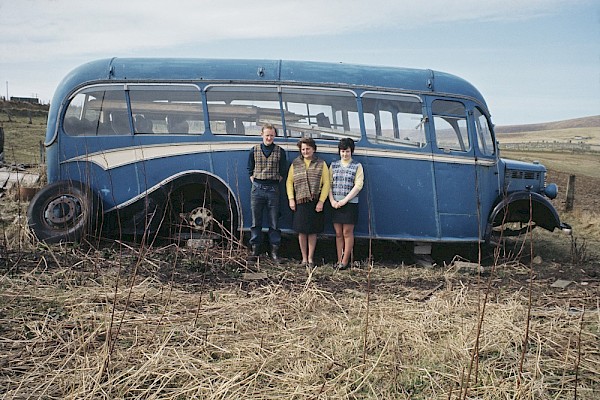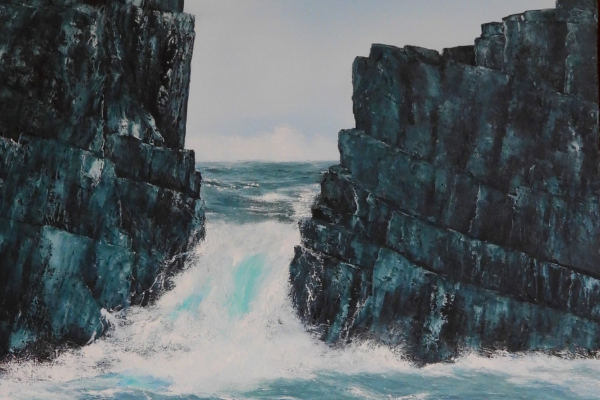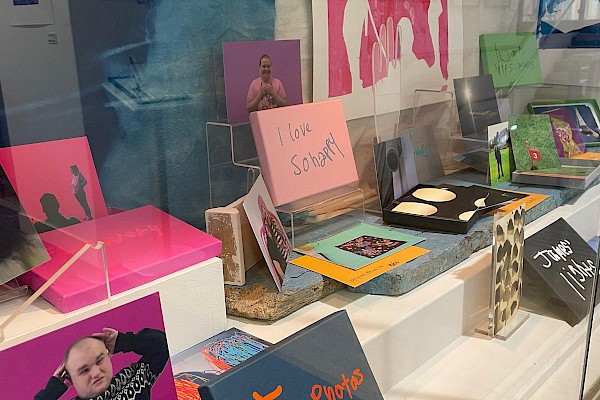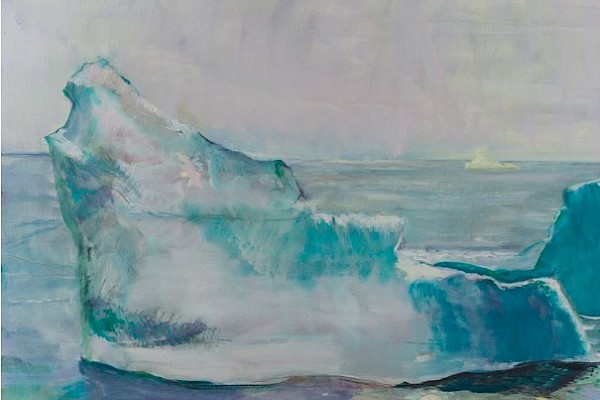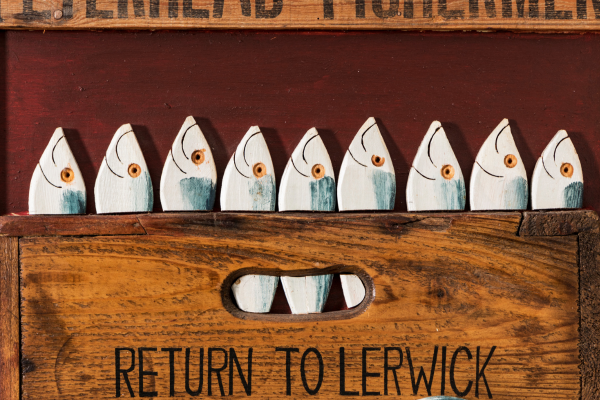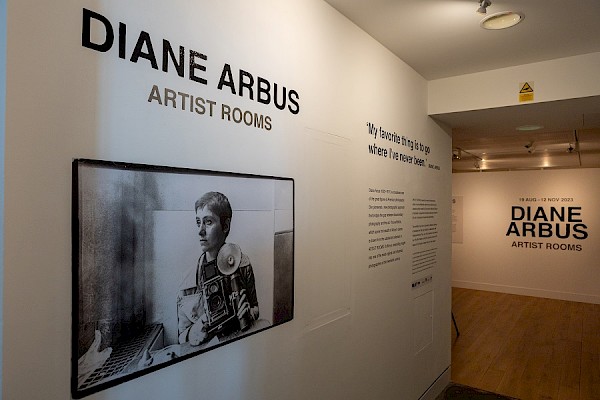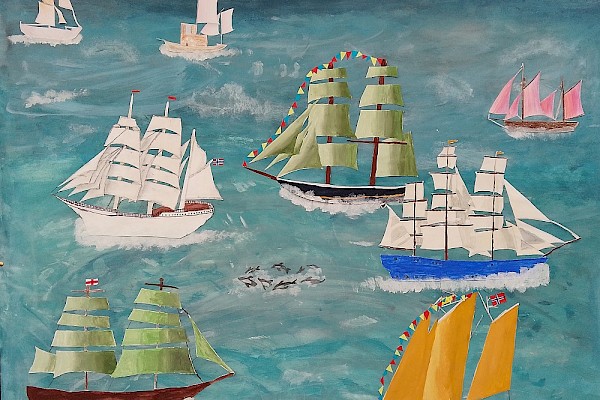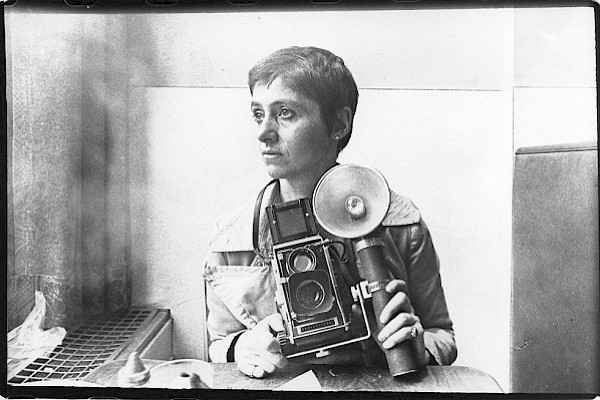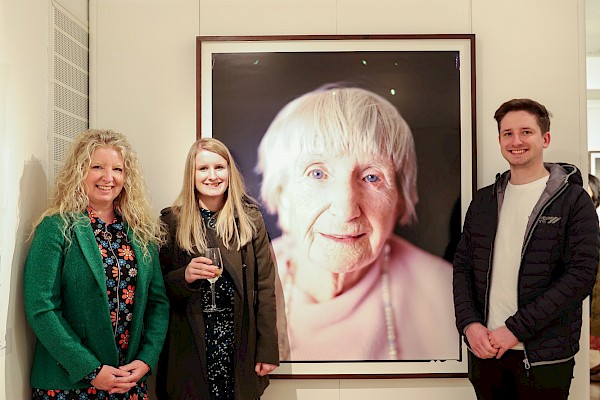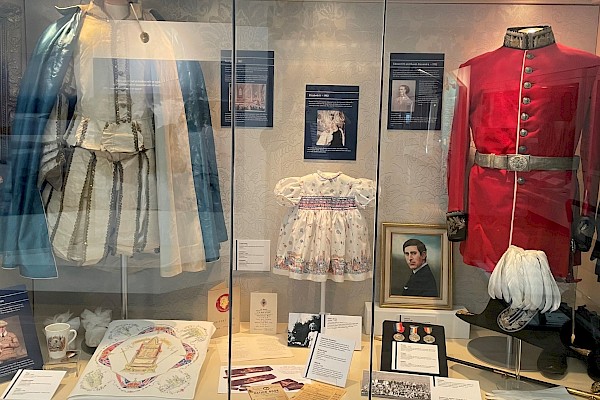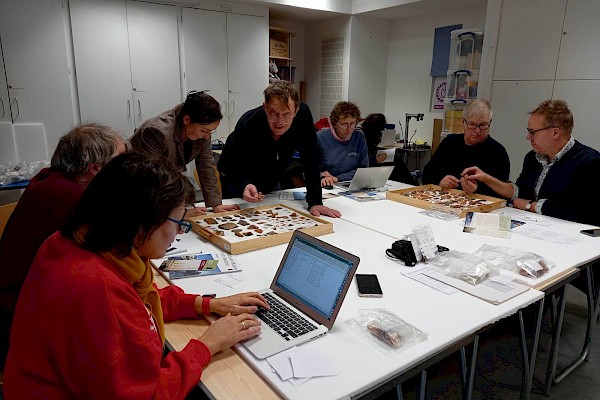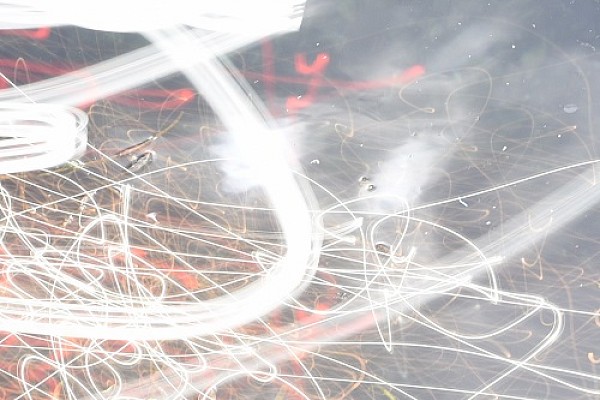Grayson Perry: Behind the Scenes
We caught up with Curator of the Shetland Museum and Archives, Dr Ian Tait, to find out just what's involved in bringing the work of a Turner Prize winning artist to Shetland.
How did the idea come about to bring Grayson Perry’s work to Shetland?
Some ideas can take a while. Occasionally an opportunity comes along, and applications for funding fly to and fro, and we get a show within a year; Perry wasn’t one of those. It’s an idea I’ve had for half-a-dozen years and might not have gone far if we hadn’t gained a vital bursary that made it all possible. Things raced ahead once that was in place.
Why Perry and not some other artist? What appeal did you think his work would have to the Shetland public?
The idea of it stems from the fact we have lots of superb art shows here, primarily two-dimensional, but very little sculpture or ceramics. The main concept was to allow local folk access to world-class art right here in Shetland. Our main mission is to show things that are relevant to here, and that means when we step sideways into the wider scene it makes a bigger impact. Why Perry? Why not Perry? Great art can speak to us all, and we don’t have to agree with what it says.
Big-name opportunities like this are few, and we’re pitching this to the Shetland audience. We wanted to timetable A Potted Biography for the winter season, because that’s when most local people come, and during the summer Perry’s show would have been lost in the general hubbub.
What additional steps were involved in bringing Perry’s pots to Shetland? What factors did you have to consider?
Besides the time of year, we also had to think about space. Our special loans have sometimes featured in the foyer, other times in the main exhibitions hall. Lenders of course have the final say, but the venue for Perry – in our Gadderie exhibitions area – was what we’d preferred anyway.
The space was booked already so we had to ask the exhibitor, Shetland Needleworkers, if they could share the room. I’m glad to say they were delighted to do so, and both shows intellectually and artistically complement one another.
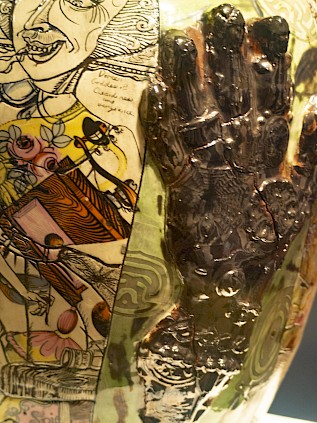
It must cost a lot of money to exhibit a Turner Prize Winner’s work in Shetland. How is it funded?
At danger of seeming Philistine, a main consideration is cost! It’s not a bad thing though, because having umpteen elite shows would devalue how special they are. Getting big-name loans of anything, art or otherwise, will mean big-name institution lenders, and they stipulate conditions that might cost us money. But that’s why we never proceed without grant funding in place. Distance means cost for Shetland, because everywhere is far away; road haulage and sea passage has to be covered.
Graphics and, in the case of Perry, our snazzy sitting room, have to be created. We’re expert in scavenging things for free, adding creative flair, and not costing money unless unavoidable. That encourages our creativity, I’m certain.
Sometimes a show may be travelling already and we have to submit a competitive bid to get the show. That’s how we secured Don McCullin, as well as last year’s Holbein. Travelling shows like the latter mightn’t cost us money, but we have to create a comprehensive learning programme to secure the extremely-competitive loan. In case of Perry, the idea came from our end, so the Ferryman Bursary enabled us to borrow from the Tate Gallery.
How did the pots make their way to Shetland?
The lender was responsible for exhaustive condition checks in their premises before the items were crated for transit. The lenders have huge experience in sending artworks of all descriptions all over the world, and we depended on their expertise. The vases were handled by fine art couriers approved by the lenders, with a sign-off at this end.
What was involved in installing the exhibition in the museum? Where did the inspiration come from for the display layout?
The design of the show was worked-up well in advance. This covered both the floor plan area, and the location of temporary walling. A major component was marking-out the show as something entirely different from our normal exhibition gallery; normally this is a large white room, with movable screens to hang works. For A Potted Biography, we wanted to segregate the area from the museum displays, so we partitioned an entrance. This then gave us the space to create our Perry sitting room.
The inspiration for the room and colours in the graphics come from Grayson Perry’s art. He is 'Mr Bright Colours', but we didn’t want to overwhelm the ceramics. So we picked two colours for the show itself, confining multicolours for the cosy sofa area.
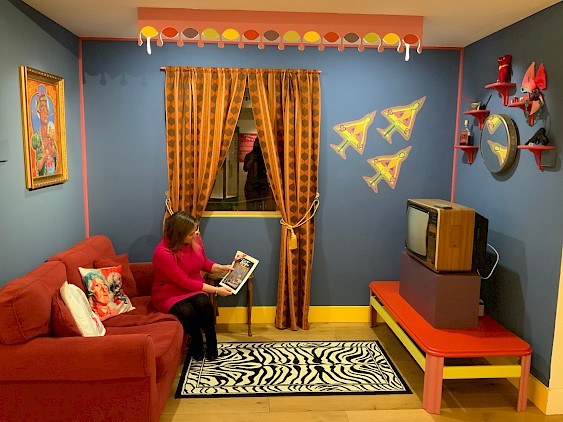
The local response, My Potted Biography, had to complement Perry’s work, but not compete with it. Most important, the fascinating content had to be available to read, but not look like a museum display: it’s an art show. That guided our biographical theme that’s central to the whole show. Everyone’s life story is different, and the idea was to borrow a variety of items that look entirely different from one another. It’s all in there, from a kimono to a rusty basin!
Were there any challenges pulling the exhibition together?
There were challenges for sure. Once the grant was confirmed, and the excitement retreated a bit, the ongoing work we have to do with a depleted workforce was a challenge. Key people to be involved were hauled every direction on other vital work.However, we do actually know what we’re doing, and have fifty years’ institutional experience to draw on. So I was sure it could be done, if the time was there. Finances weren’t the issue. In the end, this factor was made more urgent by having to do most of the development and fabrication in the last two months before the show. It was tight, but we’ve been there often enough before, and nobody had any tantrums.
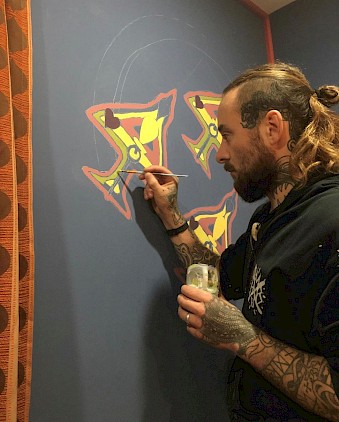
Do you think we’ll see more international works of art at Shetland Museum in the future?
I sincerely hope so. I’m increasingly keen to welcome topics that are wider to Shetland than our own culture. We’re expert in local culture; that’s what we do best. That’s what our permanent exhibitions are all about, and most of our temporary shows.
But Shetland’s location also gives an opportunity. We’re far from the mainland, which means getting something noteworthy from elsewhere will resonate. If we’re doing it at all, we should think big, and I’ve grown to appreciate populist topics! So it’s not just art, but also other things our local audience would be interested in but wouldn’t expect to find here. We’ve brought ancient Egyptian things here before, and prehistoric dinosaurs. One thing I have in mind concerns astronomy, so – quite literally – watch this space!


